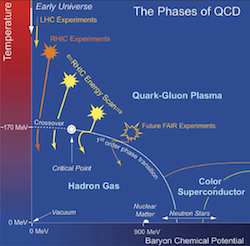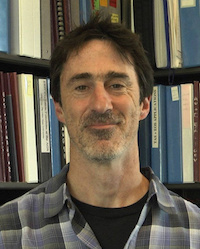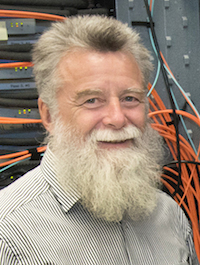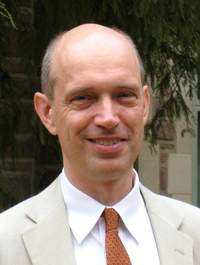The Physics of the QCD Phase Diagram
Kent State University
Kent, OH
March 27 - 28, 2015
 |
 |
 |
The 2015 Spring meeting of the Ohio-Region Section of the American Physical Society (OSAPS) will be held on Friday, March 27 and Saturday, March 28 2015 at Kent State University in Kent, Ohio. The theme for this meeting is centered around the physics of the QCD phase diagram. The plenary talks will cover both experimental and theoretical aspects of relativistic heavy ion collisions and astrophysics. However, we encourage participants to submit abstracts in all sub-areas of physics.
There will be four parallel sections for talks which are planned to encompass nuclear physics, high-energy particle physics, nuclear/particle astrophysics, condensed matter, biophysics, soft matter, medical physics, atomic/molecular/optical (AMO), computational physics, chemical physics, material sciences, astronomy/cosmology/gravitation, plasma physics, applied physics, and physics education. Speakers can request an oral presentation or a poster.
|
At-a-glance schedule of activities
|
Schedule with abstracts
|
 |
Ulrich Heinz
Professor of Physics, The Ohio State University, Columbus OH Dr. Heinz is a world leader in the field of theoretical nuclear physics. He studies the matter that filled our universe during its first 10 microseconds and which has now been re-created in very energetic collisions between atomic nuclei called heavy ions. A major discovery of Dr. Heinz's work is the insight that the universe did not start out as a hot gas, but as a near perfect liquid with almost no viscosity at all. His research has influenced the development of the theoretical framework of relativistic heavy ion physics, as well as interpretation of the experimental data. |
 |
Mike Lisa
Professor of Physics, The Ohio State University, Columbus OH Dr. Lisa's research focus over the past several years has been on the experimental study of relativistic heavy ion collisions, with a goal of understanding the bulk properties of strongly interacting matter under extreme conditions. Dr. Lisa's group's physics program has included systematic measurements at the Alternating Gradient Synchrotron (AGS) the Relativistic Heavy Ion Collider (RHIC) and the Large Hadron Collider (LHC). A particular interest and strength of his group is the study of the space-time substructure of the collisions, as probed by two-particle intensity interferometry, aka femtoscopy. These measurements turn out to be critical to understand the collective response of the system at ultra-high energy density and pressure. |
 |
Frithjof Karsch
Director, Lattice gauge theory group, Brookhaven National Lab Professor, Bielefeld University, Bielefeld Germany Dr. Karsch is a world leader in the area of lattice QCD. He currently leads the Lattice Gauge Theory group at Brookhaven National Lab. His fundamental interest is in the non-perturbative behavior of quantum chromodynamics at finite temperature and density. Because the full non-perturbative equations of QCD are extremely complicated to solve analytically, only supercomputers can handle the complex calculations. To simplify the problem, the computers look at interactions of quarks and gluons placed at discrete points on a four-dimensional lattice that accounts for three spatial dimensions plus time. The lattice consists of about 300,000 grid points, and at each point the values of 48 variables need to be accounted for. Supercomputers use Monte Carlo sampling to find the most probable configuration of these values. Using these methods, Dr. Karsch and other lattice gauge theorists have been able to determine many non-perturbative properties of QCD from first principles. |
 |
Mark Alford
Professor, Washington University, St. Louis MO Dr. Alford's research interest is quantum chromodynamics, the theory of the strong force that pertains to interactions in the nuclei of atoms. Currently he is working on the properties of quark matter. This is the state of matter that occurs at very high density, such as might be attained inside neutron stars or in heavy-ion collisions. Dr. Alford is particularly interested in color superconductivity, a phenomenon that is analogous to superconductivity in metals, but transposed to the more exotic context of quark matter. One of the main aims of his work is to find signatures of the presence of color superconducting quark matter in neutron stars. |

AIRPORTS
If you are flying in, the nearest airports are Akron-Canton Airport (CAK) and Cleveland Hopkins International Airport (CLE). Akron-Canton Airport is approximately 25 miles from Kent and Cleveland Hopkins International Airport is approximately 40 miles from Kent.
PARKING
On both Friday and Saturday you should park in the Kent State Student Center Visitor Lot. You can download a campus map with the parking and event location highlighted here. Alternatively, you can find the visitor parking lot using Google Maps. Note: S. Lincoln St in Kent is currently closed due to construction work.Friday, March 27: After you park in the lot, bring your parking ticket to the conference registration desk to have it validated. With the validation, you will not have to pay to park.
Saturday, March 28: The Kent State Student Center Visitor Lot should be open with no fee to park.
Handicap Parking: Handicap parking is located in the metered section of the visitor lot. Individuals requiring handicap parking should contact the University Conference Bureau (330) 672-3161 for special instructions.
Overflow Parking: If the visitor lot is full, you should park in the lot across the street. You must stop at the booth. The attendant on duty will ask what group you are with, issue you a permit, and direct you where to park in that area.
Passenger Drop-Off: Drivers should use the metered lane in the visitor lot and continue to the stop sign without turning into the metered lot. At the stop sign, turn left, and then left again. The location directly in front of the Student Center is a bus lane and cannot be used for passenger pick up/drop off. The driver should drive past the bus stop and enter the drop off location on the right, just past the bus stop.
We have reserved a block of 50 rooms ($79/night + taxes) at the Holiday Inn Express & Suites Kent State University. When reserving your room, please use the code "SAP" in order to receive the group rate. The rooms in this block are available on a first come first serve basis, so book early.
We have arranged an additional block of 50 rooms ($79/night + taxes) at the Hampton Inn. When registering, please use the group code "OSA" in order to receive the group rate. The rooms in this block are available on a first come first serve basis, so book early. NOTE: This hotel has made a group page for reservations available here.
We have reserved a block of 50 rooms ($109/night + taxes) at the Kent State Hotel and Conference Center. When reserving your room online, please use the code "KSUPHY" in order to receive the group rate. If you are calling, simply tell them that you are with the "KSU OSAPS Conference". The rooms in this block are available on a first come first serve basis, so book early. NOTE: There is an additional fee of $10/day for parking at this hotel.
The official registration deadline has passed, but you can still register at the meeting. Please bring a filled out form (sans the payment info) in order to expedite the process. We will accept cash or personal checks.
The registration fees for the event are:
| Up to March 20th | After March 20th | |
| APS Member | $50 | $60 |
| Non-member | $60 | $70 |
| High School Teachers, Retired Professors, and Students | $0 | $0 |
The deadline for registration is March 20, 2015. One can attend the event without submitting an abstract. To register for the event, you can either
Method 1 is the preferred method for registration.